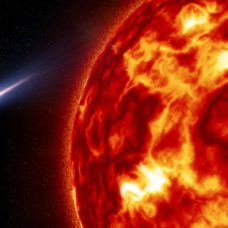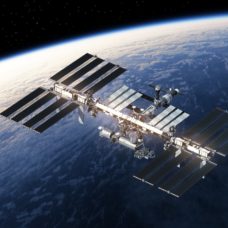As part of its so-called Planetary Defense Strategy, NASA is moving forward with its plans to build an asteroid-hunting space telescope. The goal is for scientists to search, detect, and track asteroids that are on a collision course with Earth and prevent a catastrophic impact from happening.
The U.S. space agency said that the yet-to-be-named space telescope is scheduled to be launched as soon as 2024. It will use an infrared detector to search for heat signatures of small near-Earth asteroids in the vastness of space.
At the moment, NASA calls its future asteroid finder Near-Earth Object Surveillance Mission (NEOSM). Astronomers and astroid researchers expressed their excitement about NASA’s serious move to defend our planet from threats coming from space.
Richard Binzel, an MIT asteroid researcher and professor of planetary sciences, told Business Insider:
“This is a great step forward for thinking about human destiny because the dinosaurs certainly did not have an asteroid survey program to protect themselves. Having knowledge of what’s out there is something that the planetary science community has been advocating for nearly 30 years. So this is a breakthrough decades in the making.”
Asteroid Impact
Impact events, or collisions of two celestial objects, are natural occurrences in the universe. The creation of moons and rocks of all sizes floating in space are mostly attributed to these collisions.
Evidence uncovered by scientists suggests that asteroid impact events have played a significant role in the evolution of our planet. Our moon and several mass extinctions in the history of Earth were said to be the result of asteroid collisions.
One of the most devastating impact events in our history happened around 65 million years ago, causing the mass extinction of dinosaurs. The said asteroid hit what is now known as the Yucatán Peninsula in Mexico and created the Chicxulub Crater.
Scientists estimate that the space rock that collided with Earth at that time was between 106 and 186 miles in diameter. If proven right, it would be the biggest of all known asteroids to hit our planet.
Asteroid Hunting to Defend Earth
Last month, a 1,000-foot asteroid named 2006 QQ23 passed by Earth at a distance of 5 million miles away. This month, another space rock measuring 1,700 feet across had passed by our planet at a distance of 3.5 miles away.
NASA Planetary Defense Officer Lindley Johnson told ABC News in an interview that about 25 asteroids are expected to fly within 5 million miles of Earth in the next 60 days. If you’re shocked by this news, Johnson also said that smaller asteroids tend to pass closer to our planet “all the time.”
The chance of a 100-foot or more massive asteroid hitting Earth in a year is roughly 1 in 300,000. In our lifetime, it’s calculated to be 1 in 10,000, nothing to lose sleep over.
However, it doesn’t change the fact that it can happen. If we’re not equipped with an asteroid-hunting instrument that can help us detect potential collisions, our chances of survival are next to none.
Building an asteroid-hunting infrared space telescope could help find not just nearby asteroids, but those that are nearly invisible in visible light called dark asteroids.
Jay Melosh, a planetary scientist at Purdue University, said:
“There are a lot of really dark asteroids out there. That pushes the need for the infrared system.”
It is said that NASA’s decision to build an infrared space telescope was due to its failure to detect, until the last minute, a football-sized asteroid that passed by Earth at a distance of 40, 400 miles from Earth last July.



















Comments (0)
Most Recent